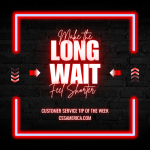
Many American college football teams have the tradition of putting special stickers on their helmets. The stickers are an award for a great play. A player at Ohio State may have 20 Buckeye stickers noting all the great plays they made, while a Florida State player may have lots of tomahawks on their helmet. The more stickers you have, then the more great plays you must have made – and everybody can see that you must be a fantastic player!
Imagine you wore a helmet at work, and you get a Star on your helmet every time that customer compliments you, that patient says you did something great, or that account thanks you for going above and beyond for them. However, every time your boss berates you, every time that customer complains to you, and every time that account holder sends you a nasty e-mail, you get a big red “X.”
As you walk around the office you see others’ helmets, and they see yours. You get a perception of who is great and who is awful by the Stars and the X’s you see, and others also get a perception of you.
By wearing these helmets, the opinions and comments of others dictate how you’re perceived, but you can never let the opinions and comments of others dictate how you perceive yourself.
If we let those words and emotions of others “stick” to us, then we’re letting others determine our worth and our self-image.
Instead, we need to find ways to let the only stickers that matter to be those that we give to ourselves. At the workplace, we need to find ways to congratulate ourselves for small successes, to give ourselves Stars for being responsive, to add a sticker for focusing on that customer or co-worker like they are the most important person in the world.
I’m not saying we should build our own ego, but I am saying that we need to feel good about what we do for others, and if we rely on others to identify our value, most of us will be selling ourselves short.
Don’t let the opinions and comments of others “stick” too long.
Fill up your own helmet.
Signup for FREE Tips! Contact Us More Resources for You Visit Our Home Page























